The ambitious engineering challenges often require tremendous patience. This is true for quantum computing. After a long period of 20 years, we have now arrived at the conclusion that "quantum computing will be extremely powerful." The quantum computer can solve the problem that the ordinary computer needs to spend astronomical time to calculate in just a few minutes. However, the work of manufacturing such machines has barely crossed the starting line. In fact, we are still trying to find the best construction materials.
Candidate materials are quite peculiar: superconducting circuits printed from aluminum and other materials and cooled to 0.01 Kelvin; floating ions that are coiled on the chip and treated with laser light; and nitrogen or other atoms trapped in the diamond matrix.
These materials have all been used to make the most basic presentation system, using several qubits to break down smaller numbers or to simulate some of the behavior of solid-state materials. But these various quantum processing elements are facing fierce competition from an absolutely stereotyped material: the traditional silicon.
As a potential quantum computing material, the rise of silicon is quite slow, but the research results make it a leading competitor. A team of researchers at Simon Fraser University in Burnaby, Canada, and our research team at University College London demonstrated that silicon materials can maintain a qubit state for 39 minutes at room temperature and 3 hours at low temperatures. This is equivalent to eternal quantum computing standards (the duration of other systems can be maintained in milliseconds or less), which is the manufacture of quantum computers with general-purpose capabilities that go beyond traditional computers and enable large-scale computing. The kind of stability required.
As a loyal fan of silicon, we are all very encouraged. For 50 years, silicon has promoted the steady and rapid development of traditional computing. The era of steady gains for traditional computers may be coming to an end, but the manufacturing of quantum computers will make this material even brighter. Silicon may usher in its "second spring", at least as dazzling as the first time.
â”â”â”â”â”â”
What is a quantum computer? In short, it is a system that stores and processes information based on the laws of quantum mechanics. This means that in practice, its basic computing components - not to mention the way these components work - are very different from the traditional forms of computing that we can think of today.
Although it sounds strange, in the quantum world, an object can exist in two different states at the same time - a phenomenon known as superposition. This means that, unlike ordinary bits, a qubit (or qubit) can be in a complex state with 0 and 1 at the same time. Only when you measure the qubit does it force you to take one of two values.
When a quantum computer performs a logical operation, it handles all possible combinations of qubit states simultaneously. This type of massively parallel computing is considered to be the reason why quantum computers can perform fast calculations. But usually people are only interested in a subset of these calculations. Measuring the final state of a quantum computer will only give you a random answer, which may or may not be the ideal solution. The key to writing a practical quantum algorithm is to eliminate unwanted answers so that you can leave the right results.
There is currently a company selling so-called "quantum computing" machines. This company is D-Wave Systems Inc. in Burnaby, Canada. The implementation of D-Wave's algorithm has some deviation from the researchers' conventional understanding of quantum computing. In fact, there is still much discussion about the nature of quantum mechanics and the potential of quantum computers.
Most researchers are looking for a generic quantum computer that can run any quantum or traditional algorithm. This kind of computer won't outperform conventional computers in all aspects. But for some specific applications, it will be very effective. One application that quickly caught the attention of intelligence agencies is that it can factorize large amounts of data at an exponential rate higher than the best traditional algorithms. It can crack the encrypted code that today's computers cannot effectively crack. Another promising area is that it can simulate quantum mechanical systems, such as molecular behavior, at high speed and with very realistic. This may be a great boon to the research and development of drugs and materials.

To build a general-purpose quantum computer capable of running these and other quantum algorithms, the first thing you need is the basic operating element: qubits. In principle, an arbitrary object can be used to simulate qubits as long as it satisfies the laws of quantum physics and can be in an overlaid state.
Since quantum behavior is usually most noticeable in tiny objects, most natural qubits are tiny objects such as electrons, single nuclei, or photons. Any property that can take two values ​​can be used to encode quantum information, such as the polarization of light or the presence or absence of electrons at a particular location. A more feasible solution is spin. Spin is a rather esoteric attribute: it reflects the angular momentum of a particle (even if no physical rotation occurs), and it also reflects the intrinsic magnetism of the object. In both the electron and the nucleus, the spin can either point up or down to represent 1 or 0, or it can be superimposed in both states.
It is also possible to obtain macroscopic qubits from man-made structures if they can be cooled to the temperature at which quantum behavior can occur. A popular structure is the magnetic flux qubits, which are constructed from the current-carrying loops of superconducting coils. These qubits, which can be measured in micrometers, amplify the singularity of quantums: When a flux qubit's state is superimposed, the current will flow in both positive and negative directions of the circuit.
The qubits used by D-Wave are based on superconducting loops. These qubits are connected together to create a machine that is different from a general-purpose quantum computer. The company uses a method called adiabatic quantum computation, in which the qubit is set to the initial state and then “relaxed†to the optimal configuration. Although this approach can be used to quickly solve certain optimization problems, D-Wave's computers cannot implement and implement any algorithms.
Although large-scale universal quantum computers still have a long way to go, we have basically mastered several of its construction methods. The most direct method is to use a computational model called a grid model. This model uses a series of "universal gates" to connect qubit groups so that they can interact as needed. Unlike conventional chips with fixed logic circuits, these gates can be used to configure and reconfigure the relationships between qubits to establish different logic operations. Such as XOR and NOT may be familiar to us, but many of them are not familiar with logic operations. These logic operations are performed in a complex space, and the state of each qubit can take any value in a continuous range. However, the basic flow of calculation is almost the same as the traditional circuit: the logic gate controls the flow of information, and the state of the qubit changes with the operation of the program. Afterwards, the results are read out through the observation system.
Another more exotic idea is called the Cluster State Model, which operates in a different way. Here, the calculation is performed only by observing the behavior. First, each qubit is "entangled" with its neighboring qubits. Entanglement is a quantum mechanical phenomenon in which two or more particles (eg, electrons) share a quantum state, and measuring a particle affects the behavior of the partner it entangles. In the cluster state method, the program actually operates by measuring the qubits in a specific order and in a specific direction. Some measurements define the calculation by building a quantum network, while others rely on this network to facilitate the transfer of information. The final result of all these measurements combined gives the final answer.
To make any of the above construction methods work, you must find a way to ensure that the qubits stay stable enough for you to perform calculations. For its part, this is a rather daunting task. The state of quantum mechanics is subtle, and they can easily be disrupted by small fluctuations in temperature or stray electromagnetic fields. This may cause serious calculation errors and even make the calculation halfway.
In addition to these, if you want to do effective calculations, you must also find a way to extend the system to hundreds or thousands of qubits. In the mid-1990s, when people made their first qubit by trapping atoms and ions for the first time, expansion was considered infeasible. Even manufacturing a qubit requires careful production methods and close operation of a large number of devices under high vacuum. However, this situation has changed in the past few years; now, there have been various candidates for quantum computing that have proved to be easy to extend (see "Quantum Competitors").


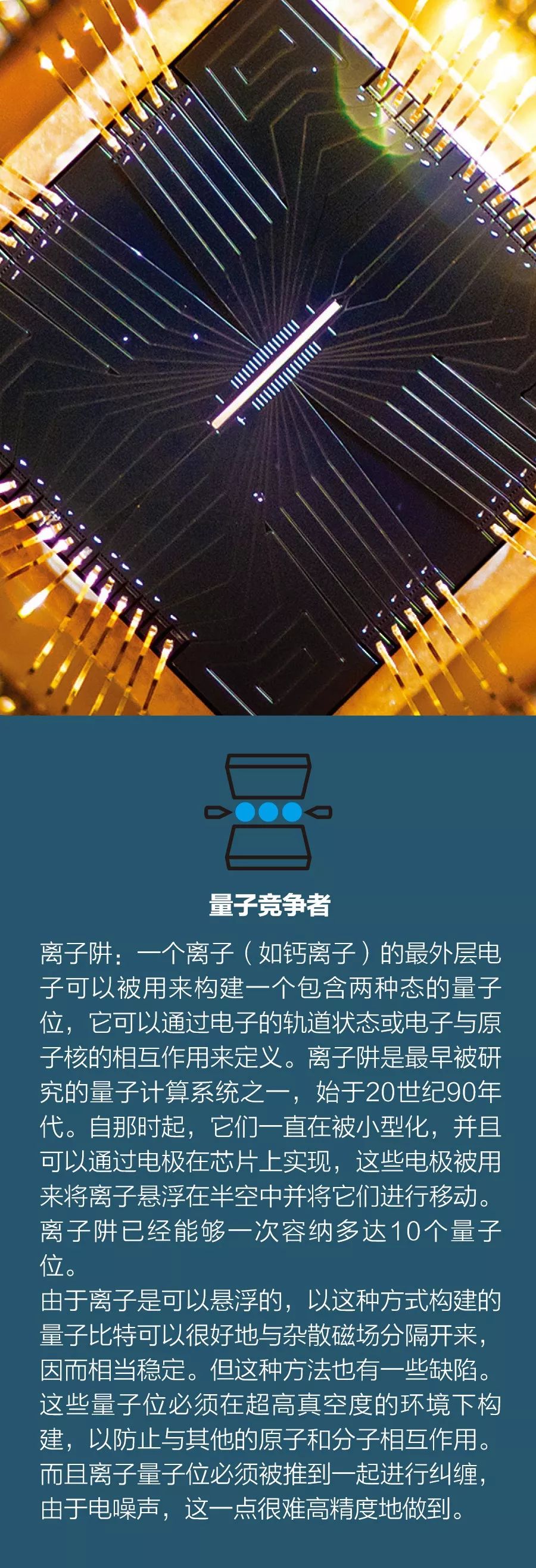
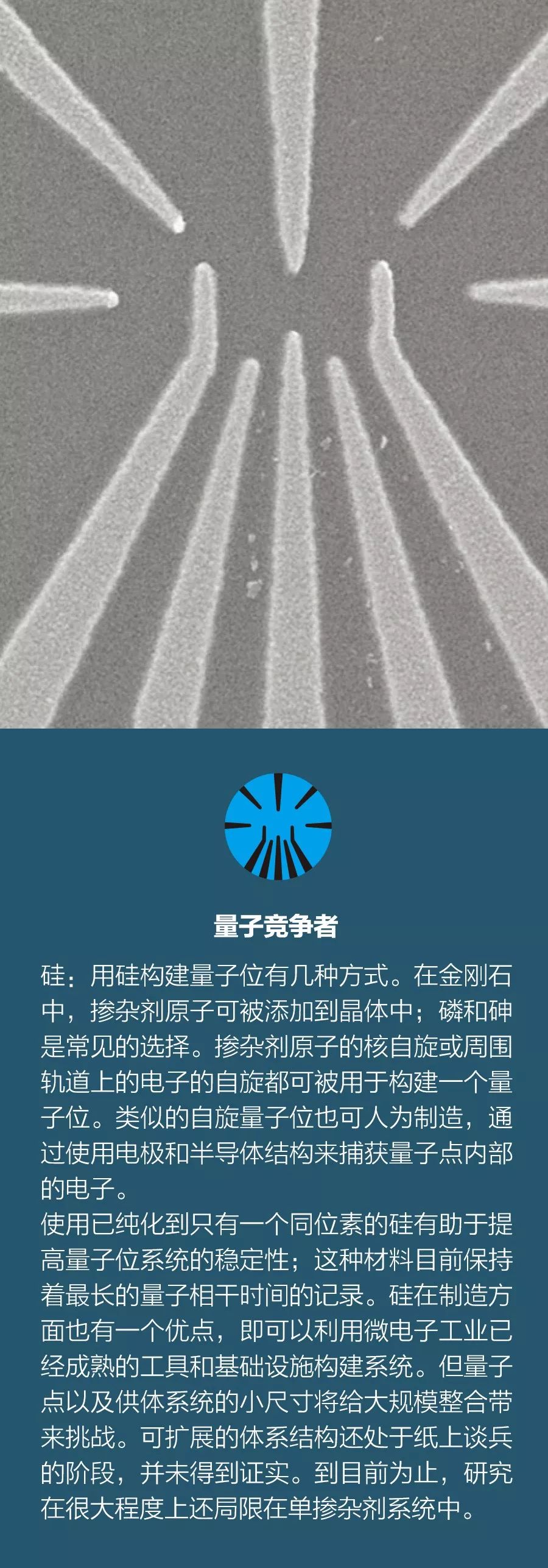
Among them, silicon-based qubits have been favored by us. They can be manufactured using traditional semiconductor technology and are expected to have stable performance and a compact structure.
â”â”â”â”â”â”
There are several different methods available to obtain qubits from silicon. We will start with an earlier method: use atoms that are placed manually in silicon.
If this method sounds familiar, it is because the semiconductor industry has used impurities to adjust the electronic properties of silicon, thereby creating devices such as diodes and transistors. In a process called doping, atoms in adjacent columns of the periodic table are added to silicon. The doped atoms send one electron (as a "donor") to an adjacent material, or one electron (as a "receptor") from an adjacent material.
These dopants change the overall electronic properties of silicon, but are only effective at temperatures above minus 220 degrees Celsius. Below this threshold, the electrons from the donor no longer have enough thermal energy to resist the attraction of the positively charged atoms and therefore return.
This phenomenon, known as carrier freeze-up, explains why most conventional silicon devices stop working. But in 1998, Bruce Kane, a physicist at the University of Maryland at the University of Maryland, pointed out that freezeout can be very useful for quantum computing. It creates a set of electrically neutral and relatively isolated atoms, each of which is fixed in place—a naturally stationary quantum system that can store information.
In this structure, information can be stored in two ways: the spin state encoded in the donor nuclei, or the spin state of the outermost electrons. The spin state of a particle is very sensitive to changing magnetic fields and interactions between neighboring particles. Spinning of other nearby nuclei is the primary problem. They will flip at will, disturbing the state of electron spin qubits in the material.
But it turns out that these spins are not a problem for silicon. Silicon has only one isotope—silicon 29—with a non-zero spin nucleus, while silicon 29 only accounts for 5% of naturally occurring silicon atoms. Therefore, nuclear spin flipping is rare for silicon atoms. Measured in accordance with quantum standards, the lifetime of donor electron spins is quite long. For example, the spin state of the electrons in the outer layer of the phosphorus donor can be maintained at a superimposed state of 0.3 milliseconds at a temperature of 8 Kelvin before being disturbed.
This is the most basic thing that a quantum computer needs. To compensate for the damage of one quantum state and keep the quantum information intact, extra longevity qubits used to identify and correct errors must be incorporated into each qubit used for computation. One of the most straightforward ways to do this is to add redundancy so that each computation qubit actually consists of a set of qubits. Over time, the information in some qubits will be corrupted, but the state of the qubits can periodically be reset uninterruptedly according to the state of most qubits. If there is enough redundancy and the error rate is below the "fault tolerance" threshold, the information can be maintained long enough to perform the calculation.
If a qubit has an average duration of 0.3 milliseconds, and microwave radiation can be used to regulate it in 10 nanoseconds, it means that before the quantum state decays, it can average 30,000 gates. The fault tolerance threshold is not the same, but this number is not very high. This means that a quantum computer will spend almost all of its time correcting the status of qubits and their clones, and there will be very little time for meaningful calculations. To reduce the time associated with error correction and build more compact, more efficient quantum computers, we must find a way to extend the life of qubits.
One way to do this is to use a silicon material that does not contain isotope silicon 29 at all. This kind of silicon is very difficult to get. However, about 10 years ago, the Avogadro project — an international cooperation project devoted to redefining the kilogram standard — happened to make some of the original balls of silicon 28 for measurements. The team used a series of centrifuges in Russia and obtained some silicon 28 with a purity of 99.995%, making it one of the purest materials ever produced. A group at Princeton University obtained some remaining material. After some careful experiments, in 2012, the team reported that they got a stable electron spin of more than 1 second at a temperature of 1.8 Kelvin - this created a world of electronic spin for all materials. Record. This really shows the true potential of silicon and establishes its position as a true competitor.
Our research team has demonstrated that the spins of certain donor atoms—especially helium—can be tuned to a specific “best point†by an external magnetic field. These "best spots" have characteristics that are insensitive to magnetic fluctuations. With regard to the donor germanium, we have found that its outer electron spin state can last up to 3 seconds in the higher purity silicon 28 at higher temperatures. Importantly, we found that in the natural silicon, the spin stability period can be maintained for 0.1 seconds. This means that we should be able to obtain relatively long qubit life without the need to seek special high purity isotope materials.
For electrons, the aforementioned time is already excellent, but it is much less than the length of time the nucleus can achieve. A recent survey led by a team at Simon Fraser University showed that the nuclear spin of phosphorus donor atoms can last up to 3 minutes in low-temperature silicon. Since the interaction of nuclear spins with the outside world is achieved through its surrounding electrons, if the outermost electrons of phosphorus are removed, this time can be extended to three hours.
The reason why the lifespan of nuclear spins is longer than that of electron spins is because their magnetic properties are weak and their interaction with the environment is not so strong. But this stability comes at a price, because it also makes them more difficult to regulate. Therefore, we expect that quantum computers constructed from donor atoms may use both nuclei and electrons. Easily manipulated electron spins can be used for computations, and more stable nuclear spins can be deployed as storage elements to store information in the quantum state during calculations.
The spin duration records mentioned above all come from the measurement of the entire donor set. But there is still a major challenge: how do you manage and measure the state of a donor qubit at a time, especially when there are tens of thousands or millions of qubits in a small space? Until a few years ago, people did not know how to do this. But in 2010, after 10 years of arduous research and development, a team led by Andrea Morello and Andrew Dzurak from the University of New South Wales in Sydney stated that It is possible to read the electron spin state of a single donor atom. They placed a phosphorous donor near a device called a metal oxide semiconductor (MOS) single electron transistor (SET), applied a gentle magnetic field, and lowered the temperature. The electrons that spin and the magnetic field reversed get more energy than the electrons that spin and the magnetic field, and this extra energy is enough to make the electrons pop out from the donor atoms. Because the SET is extremely sensitive to the state of charge of the surrounding environment, the ionization process of the doped atoms changes the SET current. Since then, this method has been extended to control and read single nuclear spin states.
SET may be one of the key cornerstones for us to build effective qubits. However, there are still some major obstacles to the actual construction of quantum computers. Currently, the SET must work at very low temperatures - only a few Kelvin - to be sensitive enough to read qubits. Moreover, although we can read a qubit with a single device, we do not have a detailed blueprint for the expansion. How to make a large array and integrate such devices on a single chip is still a problem to be solved.
There is also a silicon-based method for constructing qubits that has been shown to be easier to extend. This idea stems from the study of physicists David DiVincenzo and Daniel Loss. The qubits are constructed by a single electron tethered to the interior of the quantum dot.
In a quantum dot, electrons can be tightly bound and they are forced to occupy discrete levels just as they are around atoms. In a frozen donor atom, the spin state of the bound electron can be used as the basis for a qubit.

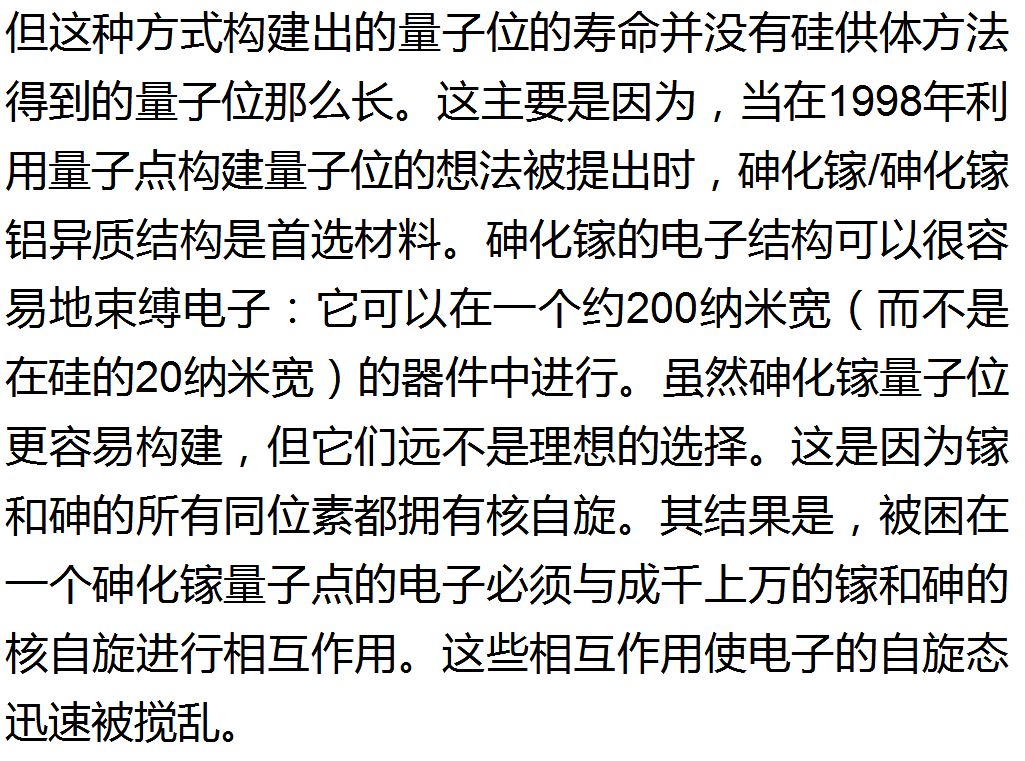


â”â”â”â”â”â”
With the deepening of quantum computing research around silicon, we are in a unique period. We have two possible systems - donors and quantum dots - that may be used to make quantum computers.
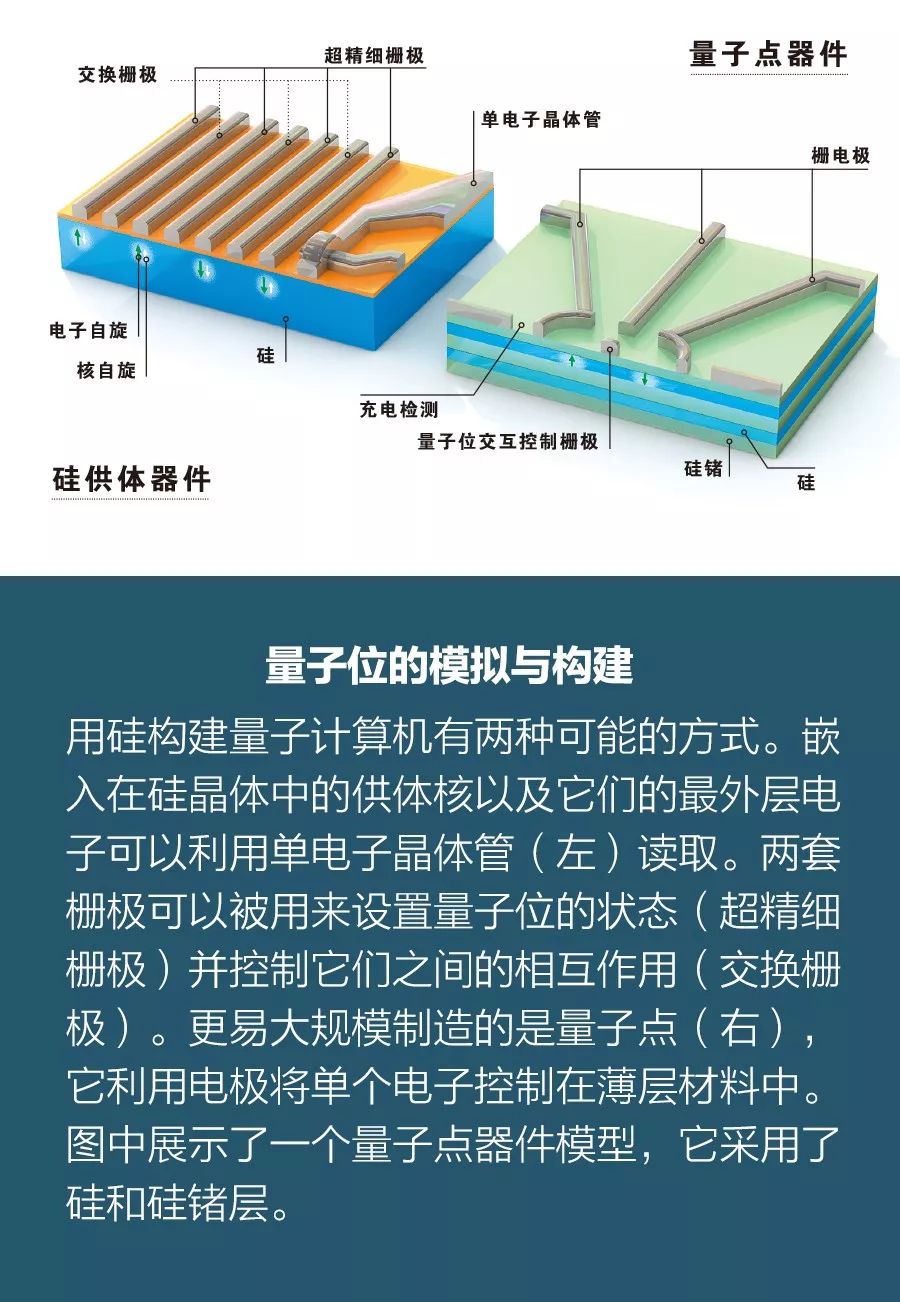
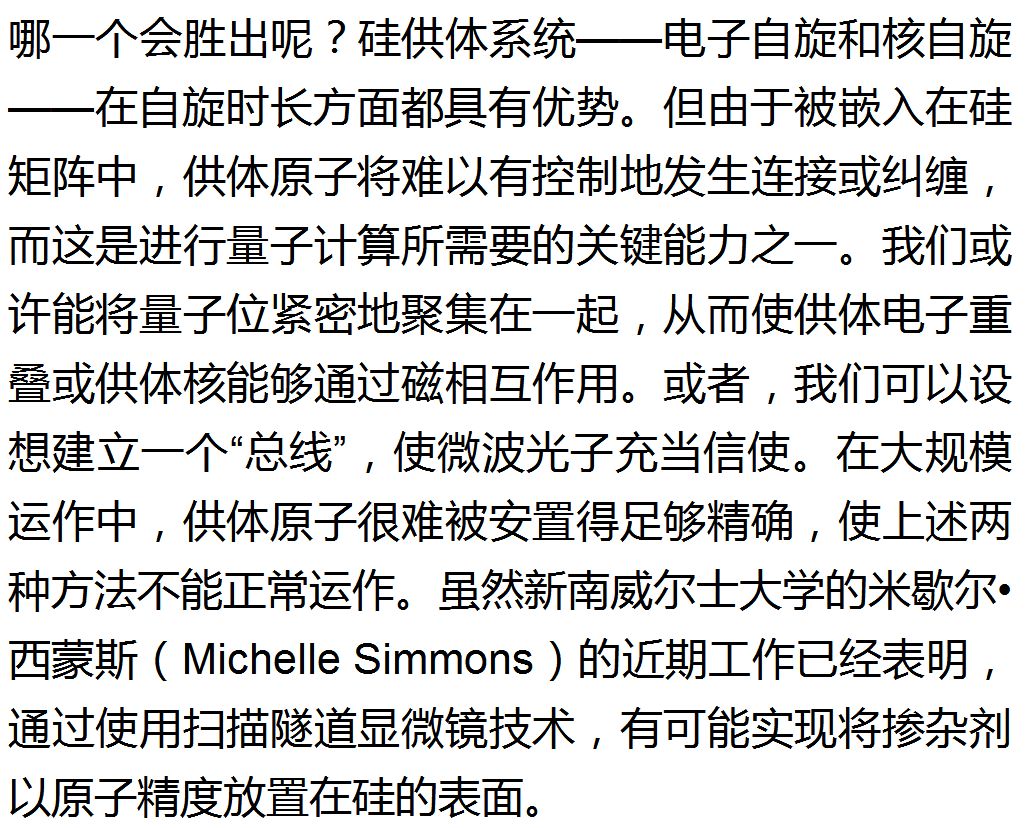
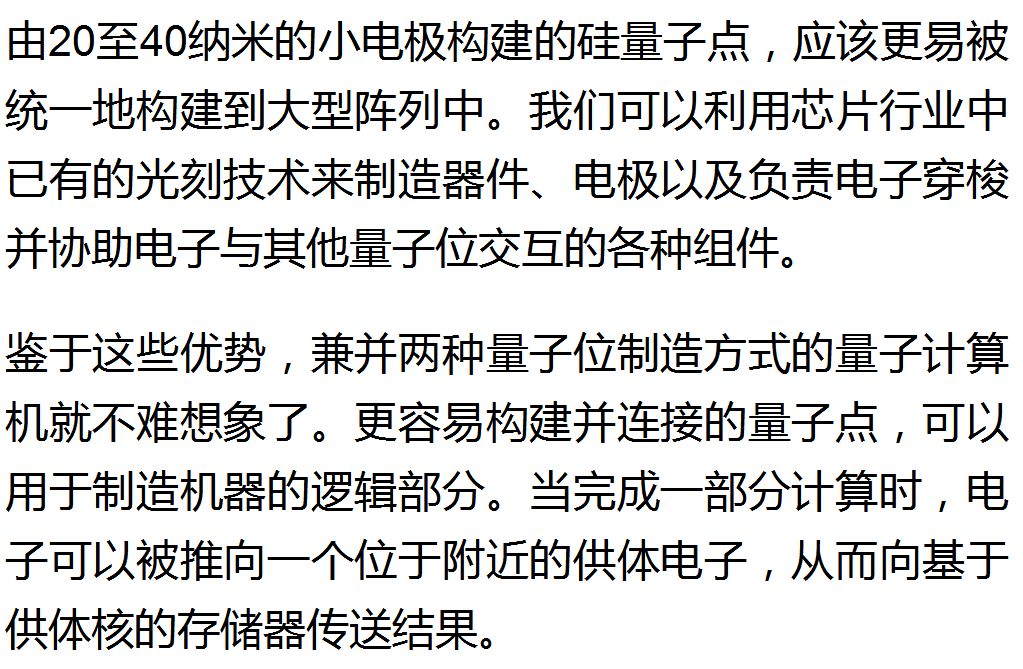
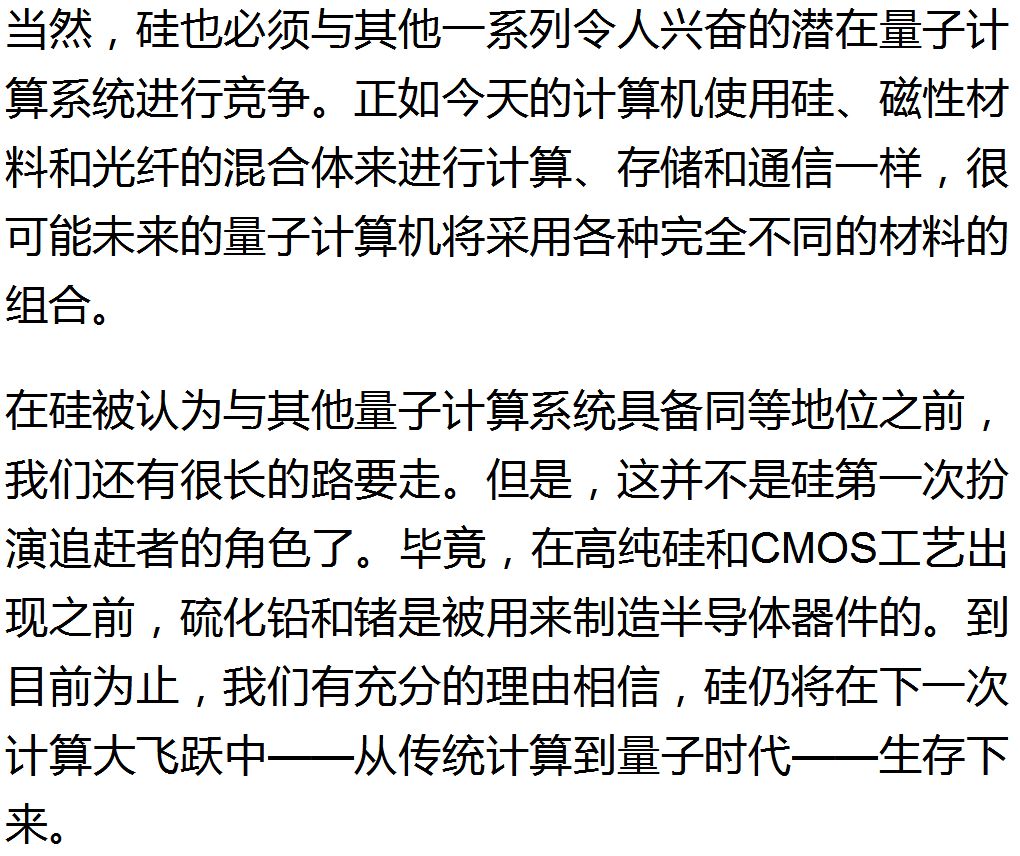
PLC Splitters are Single Mode Splitters with an even split ratio from one input fiber to multiple output fibers. Available split counts are 1x4, 1x8, 1x16, and 1x32. Fiber Optic PLC Splitter is available with 900µm loose tube single mode fiber and terminated or unterminated as per your needs. Unconnectorized PLC splitters come with no connectors for easy splicing or connectorization. Connectorized PLC Splitters are available with your choice of Fiber Optic Connectors: LC/UPC, LC/APC, SC/UPC, SC/APC, FC/UPC, FC/APC, and ST/UPC.
Planar lightwave circuit splitter is a type of optical power management device that is fabricated using silica optical waveguide technology. It features small size, high reliability, wide operating wavelength range and good channel-to channel uniformity, and is widely used in PON networks to realize optical signal power splitting. Bwinners provides whole series of 1×N and 2×N splitter products that are tailored for specific applications. All products meet GR-1209-CORE and GR-1221-CORE requirements.
We provide the whole series of 1xN and 2xN splitter products that are tailored for specific applications. Fiber Optic Splitter Plc, Fiber Optic Cable Splitter, Optical Splitter, Mini Type Plc Splitter, Cassette Type PLC Splitter, Insertion Module Plc are available.
Features:
Low insertion loss and low PDL
Various coupling ratio
Environment stable
Single mode and multimode available
High Reliability and Stability
High Channel counts
Wide wavelength range
Customized packaging and configuration
Applications:
FTTx Construction
Fiber Optical communication system
Fiber Optical access networks
Fiber Sensor
Fiber CATV networks
Local area networks
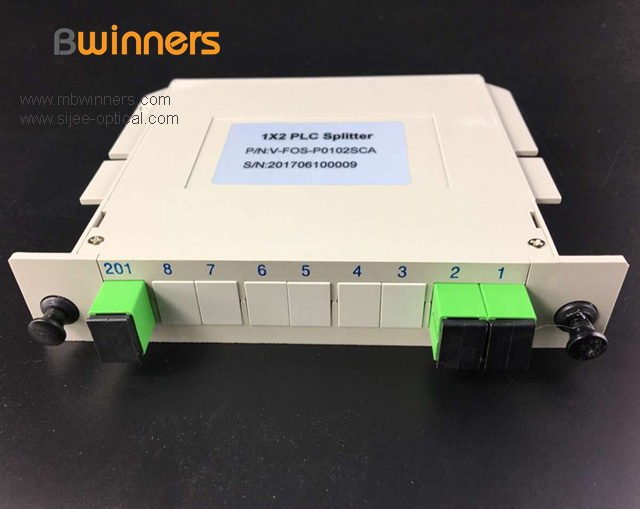
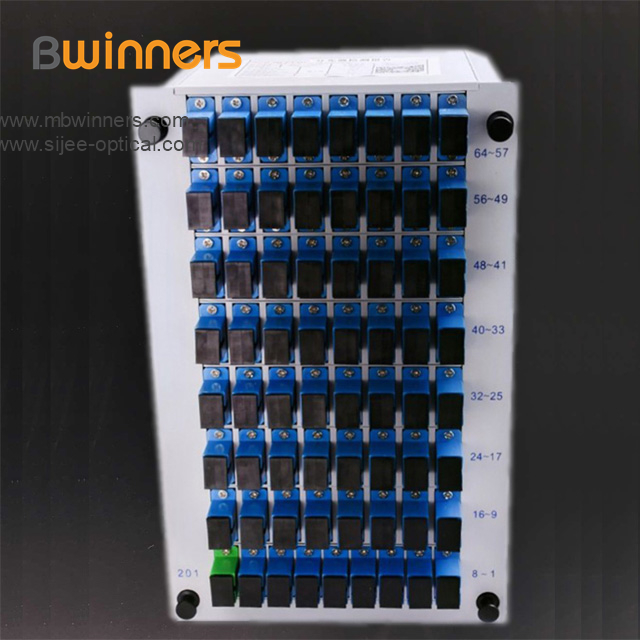
Insert PLC Splitter Module,SC APC Splitter,Plc Optical Splitter,Fiber Optic Splitter Coupler
Sijee Optical Communication Technology Co.,Ltd , https://www.sijee-optical.com